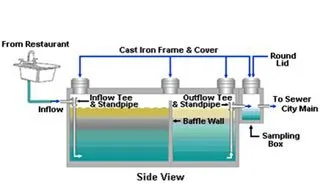Grease Trap Maintenance
Grease Trap Maintenance
Fats, oil, and grease — also called FOG in the wastewater business — can cause major problems in sewer lines. Most sewer line blockages can be traced back to FOG. Blockages in the sewer lines are serious, causing sewage spills, grease trap overflows, or sewage backups into both commercial and residential buildings. This in turn causes cities and counties to issue costly and unnecessary fines, and often forces businesses to close their doors. Ask us what we can do for you!
Preventative maintenance on your grease trap / interceptor is the answer … we have been successfully helping thousands of customers for over 40 years!
What Is a Grease Trap Interceptor?
A grease trap is a small reservoir built into the wastewater piping or sewer line, a short distance from the grease-producing area or restaurant. Baffles in the grease trap retain the wastewater long enough for the grease to rise to the surface. The grease can then be removed and disposed of properly. An interceptor is a vault with a minimum capacity of 500 gallons that is located on the exterior of the building. The vault includes a minimum of two compartments and flows between each compartment through a baffle for grease retention.

Frequency of Cleaning
All grease traps and interceptors should be cleaned on a quarterly basis to be properly maintained. Some establishments will find it necessary to clean their traps more often depending on the amount of FOG being produced. Grease is a big problem in the restaurant business. Large amounts of oil and grease in the sewer water cause trouble in the sewer system pipes and decrease pipe capacity and flow. This buildup requires that sewer lines be cleaned more often as blockages will cause wastewater to back up into the restaurant, resulting in unsanitary working and eating conditions.
To learn more of what we can do for you, ask about our restaurant referral program!